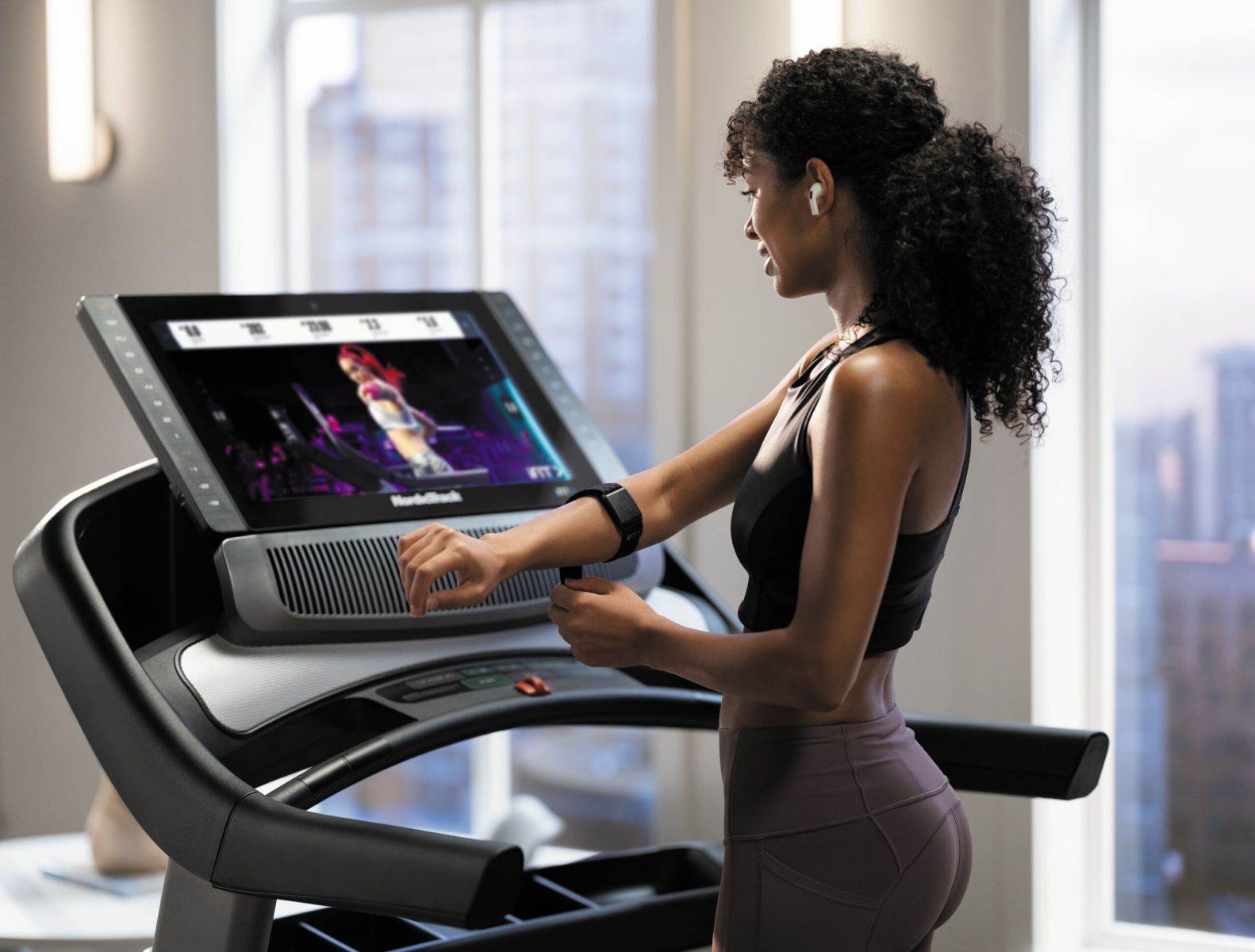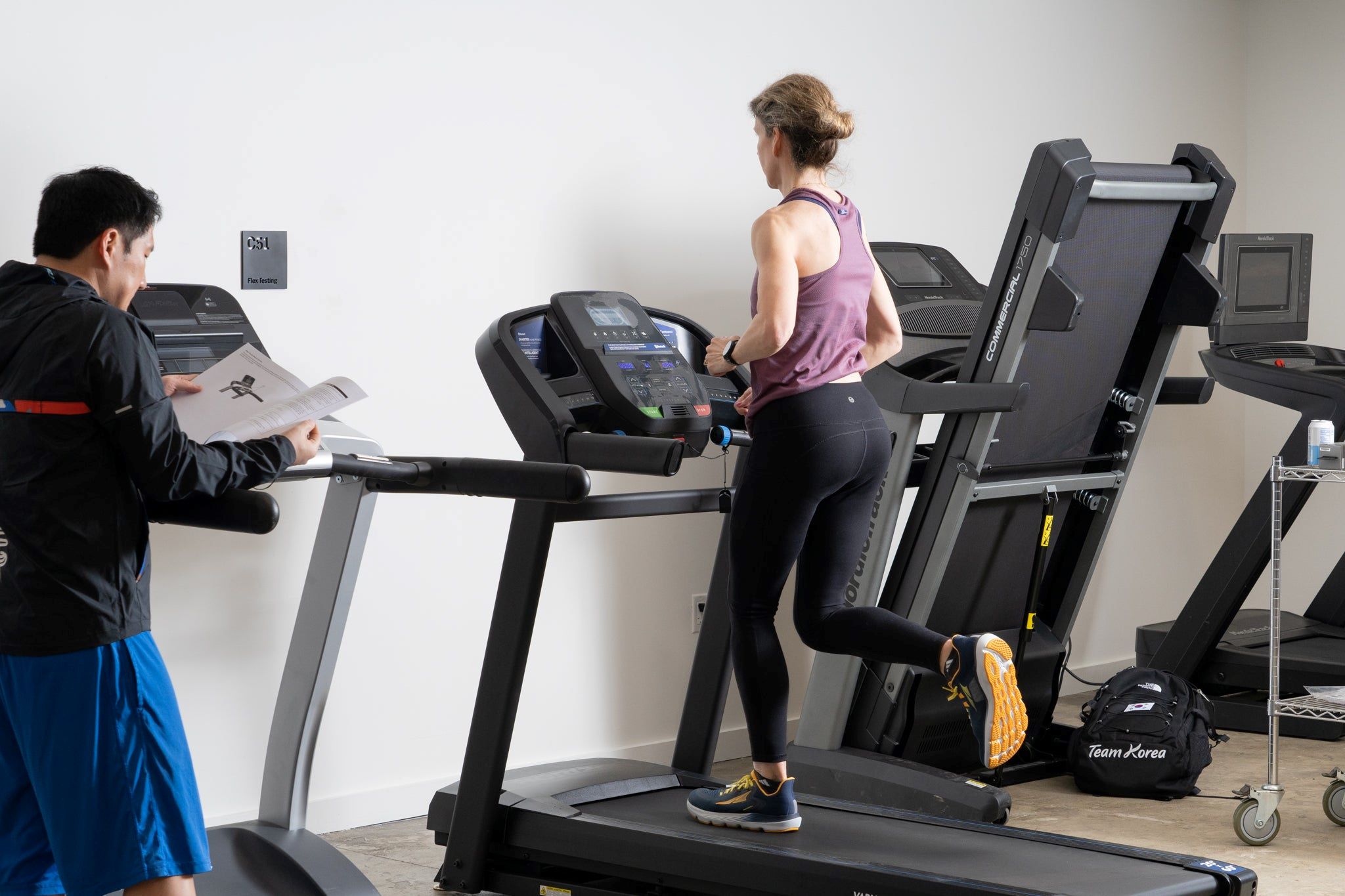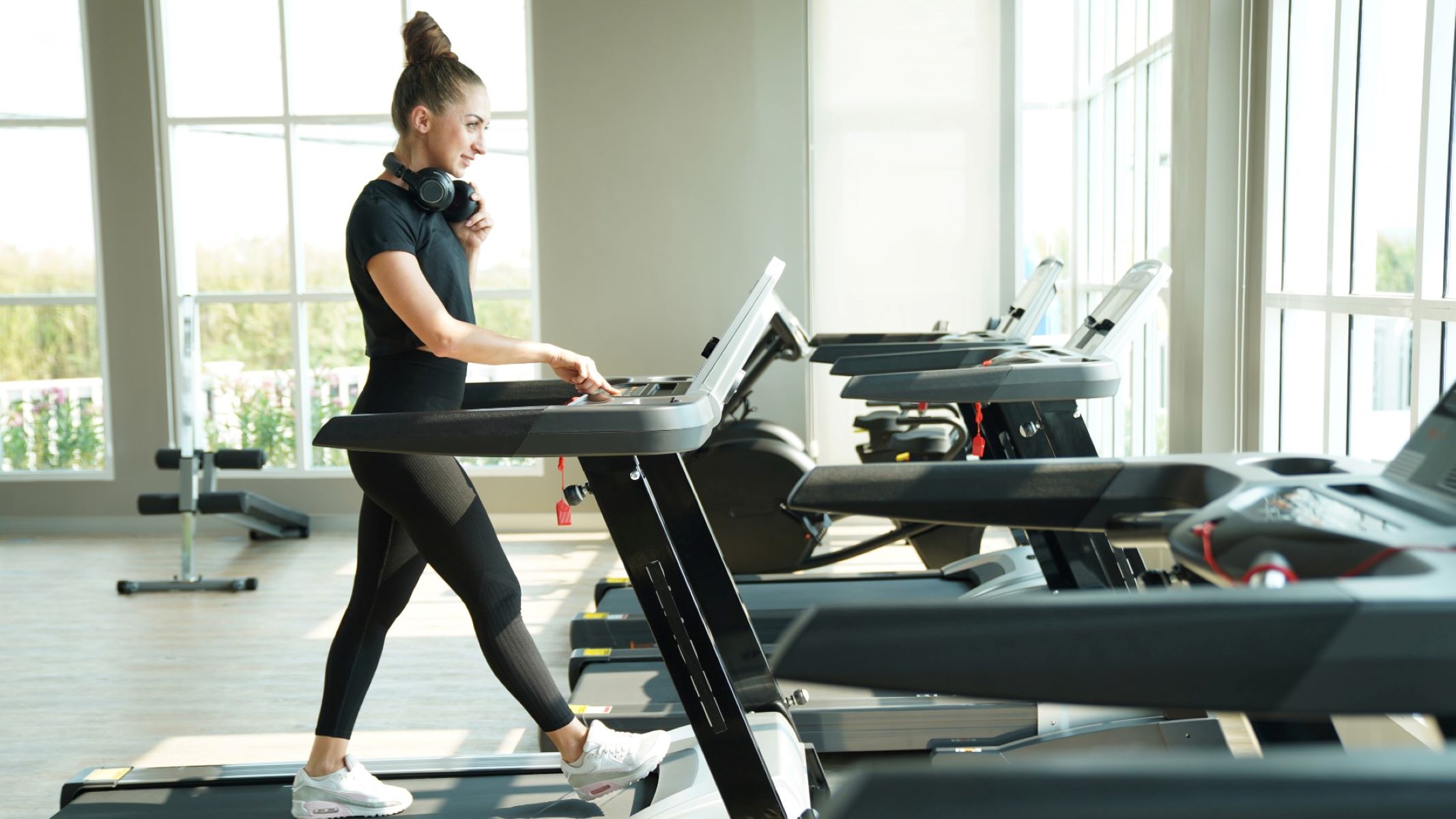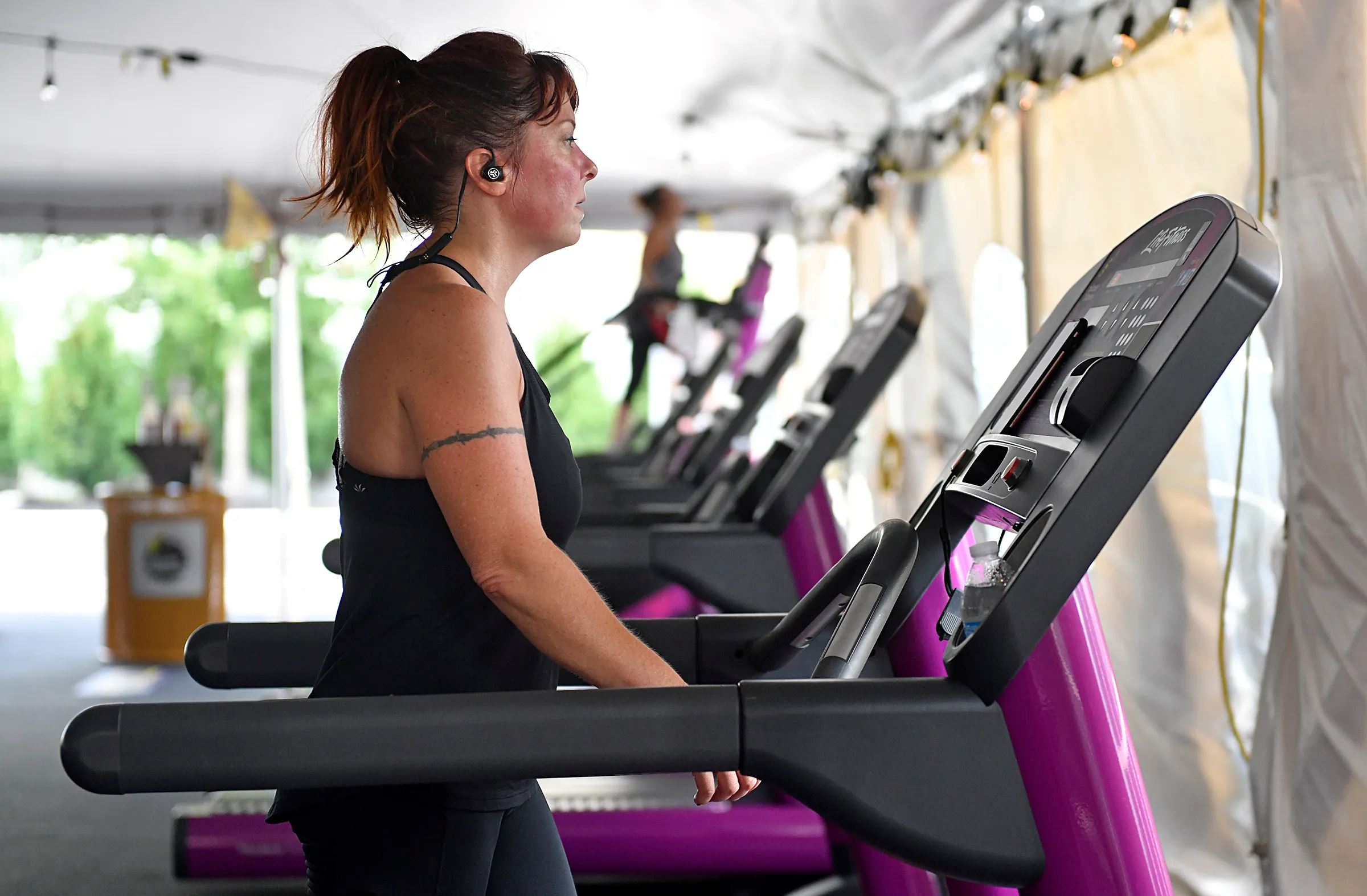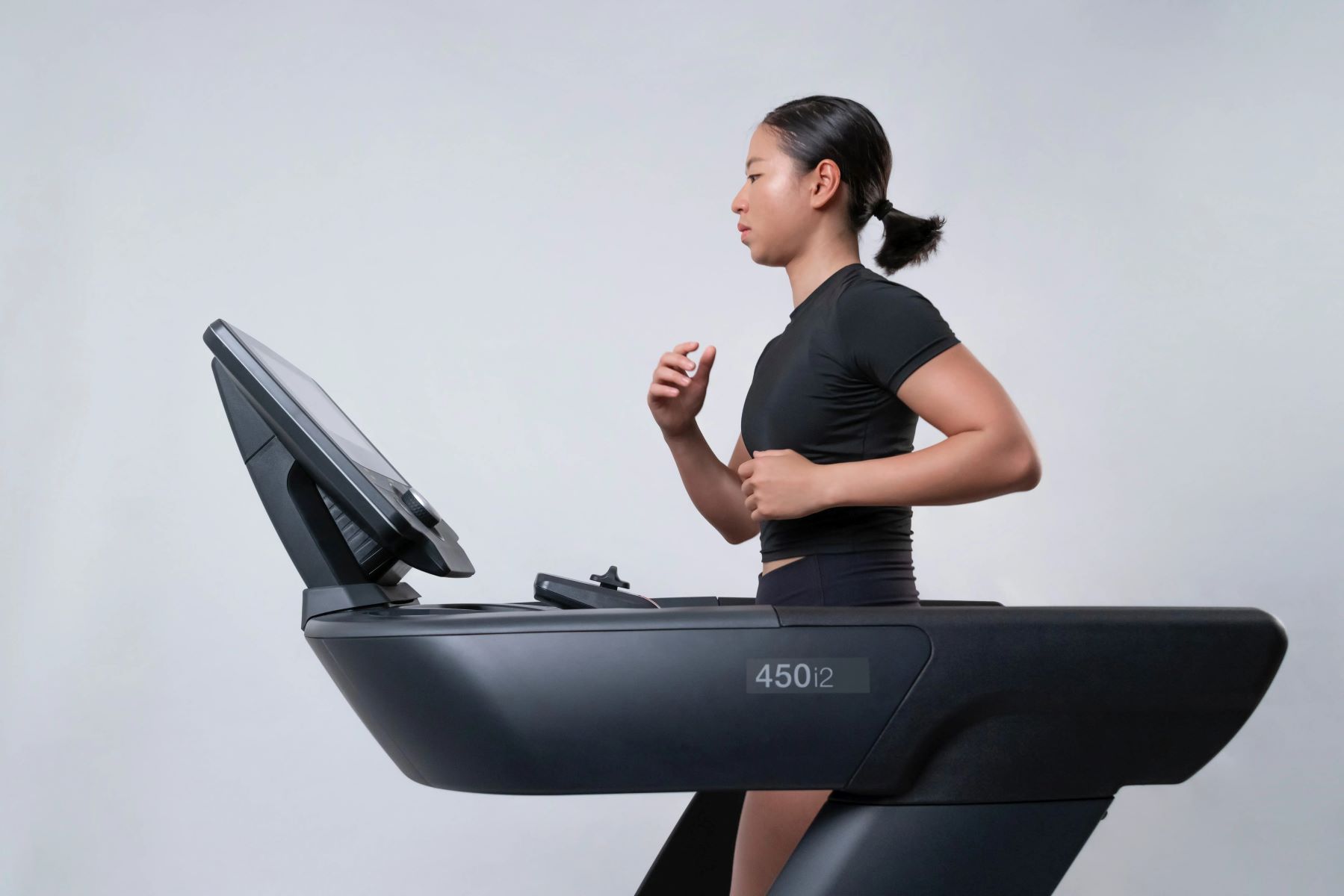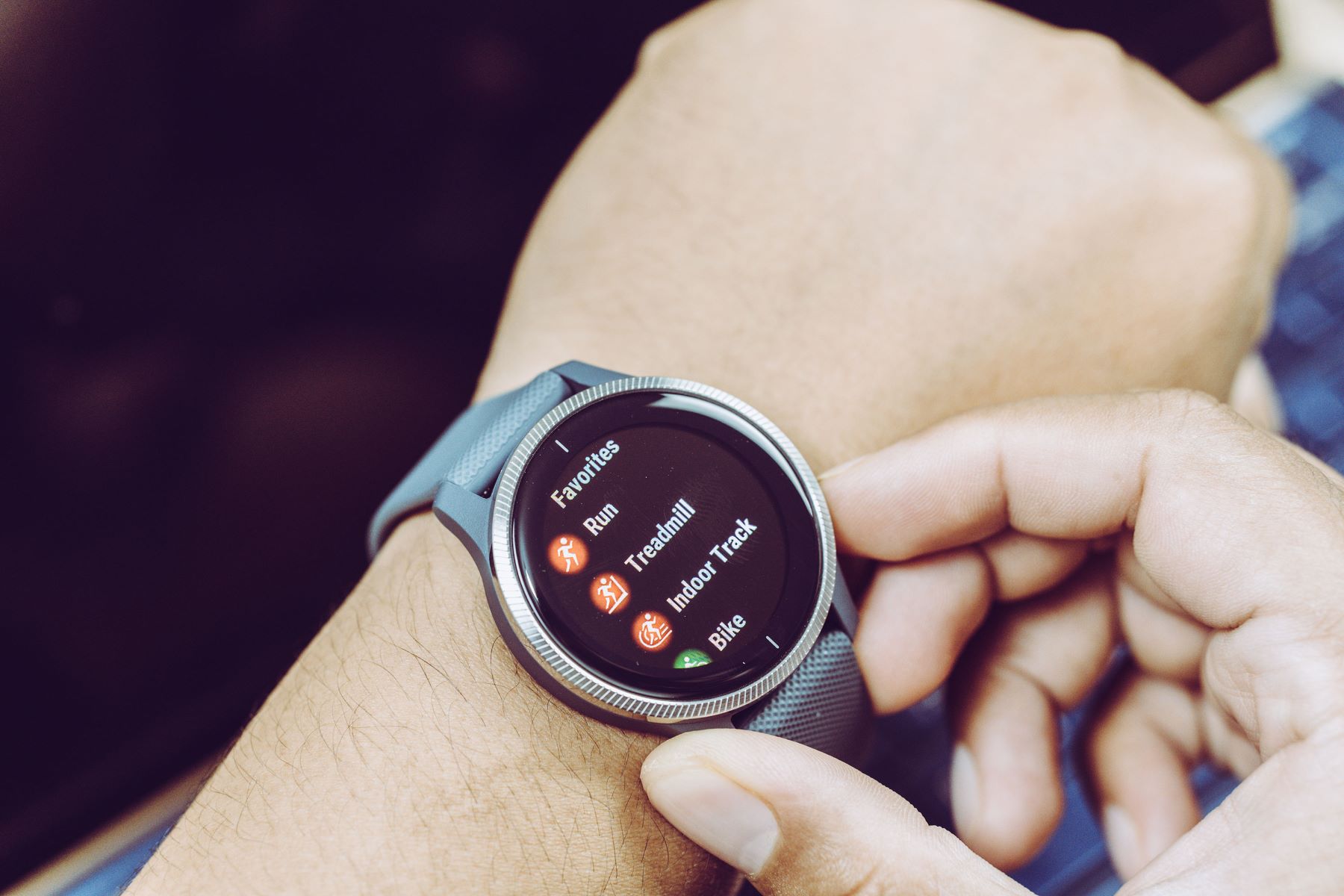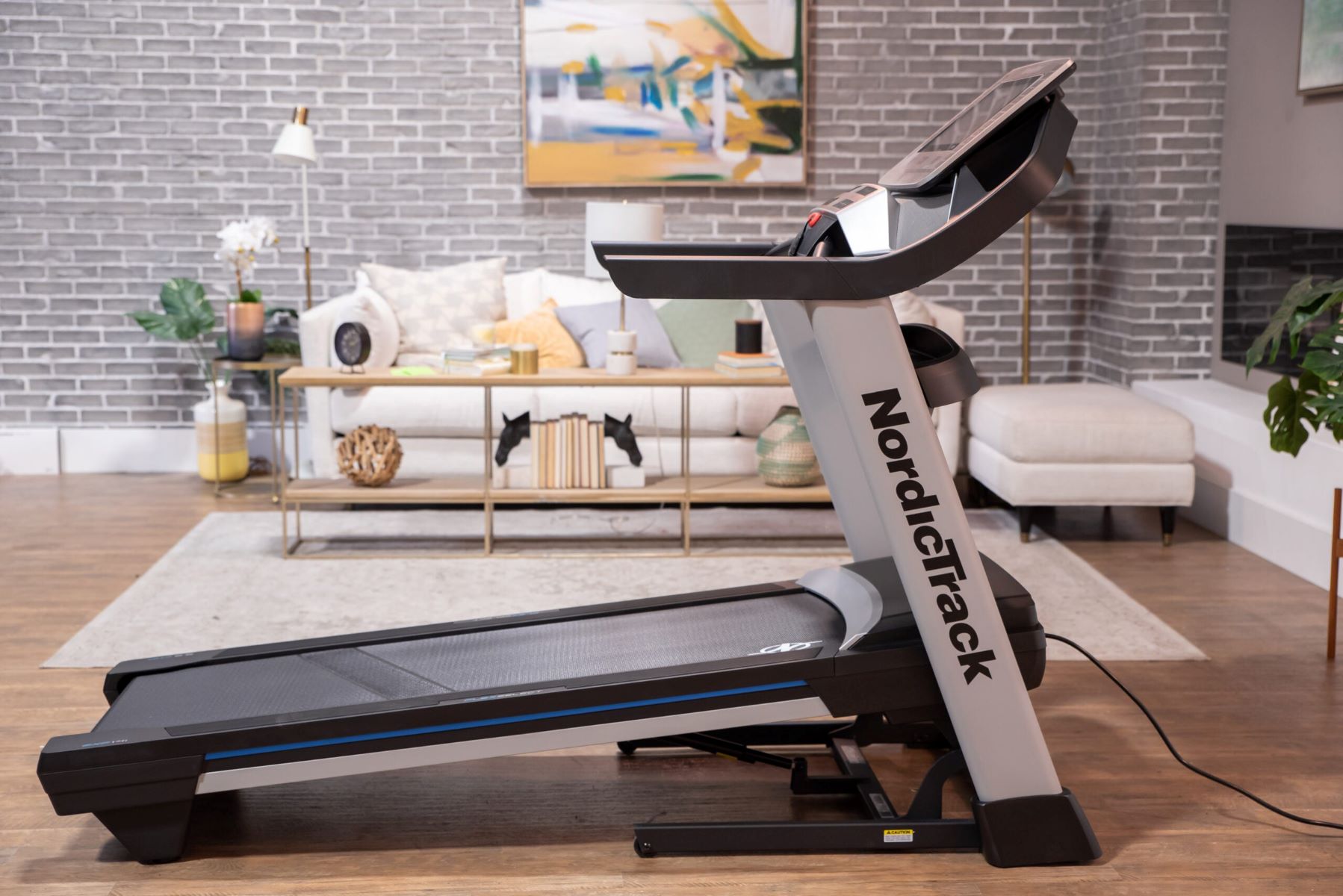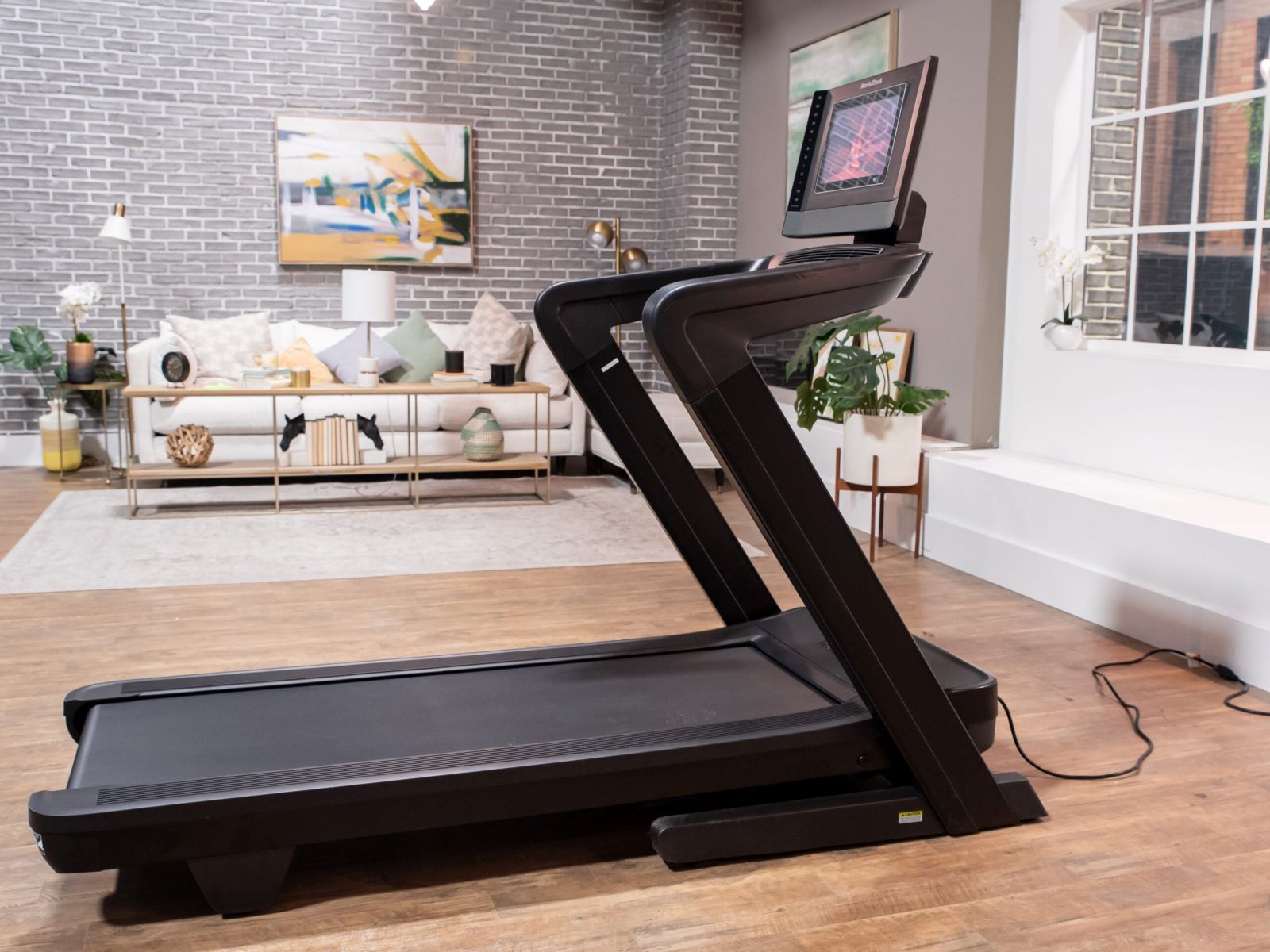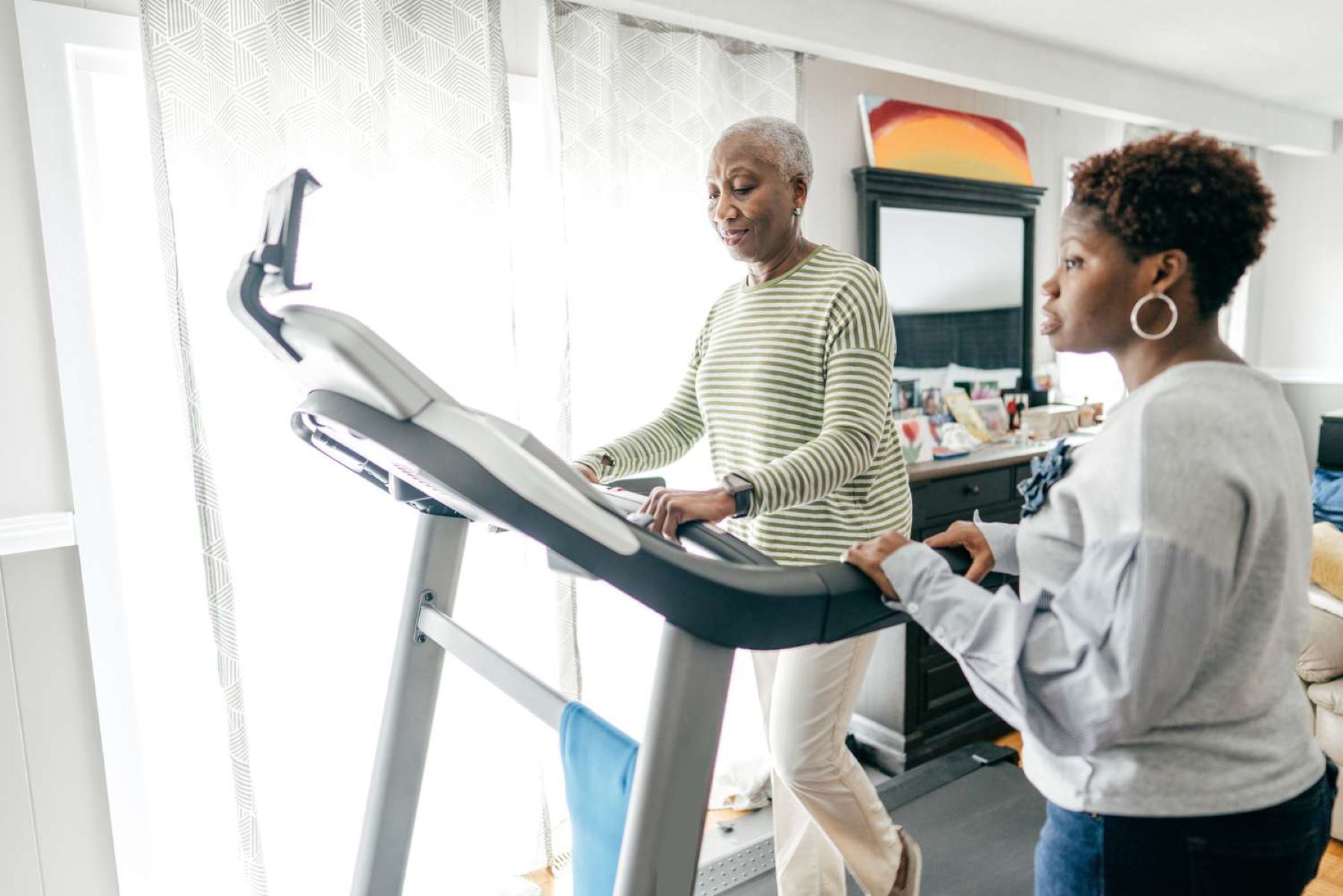

Featured
How To Track Steps On A Treadmill
Modified: January 2, 2024
Learn how to track your steps on a treadmill with our featured guide. Monitor your progress and achieve your fitness goals effectively.
Introduction
When it comes to tracking your fitness progress, counting steps is a popular way to measure your activity level. But what if you prefer exercising on a treadmill? Is it still possible to track your steps accurately? The answer is a resounding yes!
In this article, we will explore how you can track your steps on a treadmill effectively. Whether you are a seasoned runner or just starting out on your fitness journey, having a reliable method to track your steps can provide valuable insights into your progress and help you reach your goals.
Setting up a treadmill is a common choice for individuals who prefer exercising at home or in a gym setting. Unlike running or walking outdoors, treadmill workouts offer convenience, flexibility, and the ability to control various parameters, such as speed and incline.
However, one challenge that treadmill users face is accurately monitoring their step count. Since the treadmill belt moves underneath your feet, it can be difficult to determine the exact number of steps taken during a workout. Thankfully, advancements in technology have made it easier to track steps on a treadmill using various devices.
The key to accurately tracking steps on a treadmill lies in selecting the right tracking device and calibrating it properly. With the correct setup and a few additional tips and tricks, you can ensure that your step count is as accurate as possible, regardless of whether you are running, walking, or engaging in interval training on the treadmill.
Throughout this article, we will guide you through the process of tracking your steps on a treadmill, exploring different tracking device options, calibrating your device, and analyzing and recording your step data. By the end, you will be equipped with the knowledge and tools necessary to monitor your steps effectively and track your fitness progress on the treadmill.
So, let’s dive in and discover how you can take your treadmill workouts to the next level by accurately tracking your steps!
Setting up the Treadmill
Before you begin tracking your steps on the treadmill, it’s important to ensure that your treadmill is set up correctly. Proper setup will not only enhance your safety but also contribute to accurate step tracking. Here are a few key steps to follow when setting up your treadmill:
- Choose a suitable location: Find a spacious area in your home or gym where you can set up your treadmill. Ensure that there is enough clearance around the machine to allow for safe and comfortable workouts.
- Level the treadmill: Use a level to ensure that your treadmill is perfectly level. This will prevent any imbalance or instability during your workouts and provide a more accurate measurement of your steps.
- Adjust the belt tension: Check the tension of the treadmill belt. It should neither be too loose nor too tight. A loose belt may cause slippage, while a tight belt can put unnecessary strain on your body.
- Set the speed and incline: Familiarize yourself with the controls and settings on your treadmill. Set the desired speed and incline levels that align with your fitness goals and preferences.
- Attach safety clip: Most treadmills come with a safety clip or key that you can attach to your clothing. This clip ensures that the machine stops if you accidentally fall or drift too far back on the belt.
- Wear appropriate footwear: Choose proper athletic shoes with good support and cushioning. This will not only make your workouts more comfortable but also provide better traction and stability, leading to more accurate step tracking.
By following these steps, you can create an optimal environment for tracking your steps on the treadmill. Remember, a well-set-up and safe treadmill not only improves your overall workout experience but also enhances the accuracy of the step tracking measurements.
Choosing the Right Tracking Device
When it comes to tracking your steps on a treadmill, having the right tracking device is essential for accurate measurements. While most fitness trackers and smartwatches offer step tracking features, not all devices are suitable for treadmill workouts. Here are a few factors to consider when choosing the right tracking device:
- Accuracy: Look for a tracking device that has a reputation for accurate step counting. This is especially important when it comes to treadmill workouts, as the device needs to be able to differentiate between steps and the movement of the treadmill belt.
- Compatibility: Ensure that the tracking device you choose is compatible with your treadmill. Some devices may have specific compatibility requirements or may offer dedicated treadmill tracking features.
- Placement: Consider where the tracking device needs to be worn or placed on your body. Some devices are worn on the wrist, while others can be clipped onto clothing or placed in a pocket. Choose a method of placement that is comfortable for you during your treadmill workouts.
- Additional Features: Take into account any additional features or functionalities that the tracking device offers. This may include heart rate monitoring, GPS tracking, or workout analysis. These features can provide valuable insights into your treadmill workouts.
- Battery Life: Check the battery life of the tracking device. You want something that will last through your entire workout without needing to be charged frequently.
- User-Friendliness: Consider the user-friendliness of the tracking device. Look for a device with a clear display, easy-to-navigate interface, and intuitive controls.
It’s important to research and read reviews about different tracking devices to find the one that best suits your needs and preferences. Consider factors like cost, brand reputation, and user feedback before making your final decision.
Remember, choosing the right tracking device is crucial for accurately monitoring your steps on the treadmill. By investing in a quality tracking device, you can have confidence in the step data you collect and use it to guide and motivate your fitness journey.
Calibrating the Tracking Device
Once you have selected the right tracking device for your treadmill workouts, the next step is to calibrate it properly. Calibration helps ensure that the device accurately measures your steps and provides reliable data. Here are some steps to follow when calibrating your tracking device:
- Read the Device Instructions: Familiarize yourself with the user manual or instructions provided by the manufacturer. Each tracking device may have specific calibration instructions that you need to follow.
- Reset the Device: If your tracking device has a reset option, start by resetting it to its default settings. This clears any previously stored data and ensures a fresh calibration process.
- Choose the Correct Measurement Units: Make sure the tracking device is set to the correct measurement units, such as miles or kilometers, depending on your preference. This ensures that your step count aligns with your desired tracking format.
- Perform a Manual Calibration: Some tracking devices offer the option to calibrate manually. To do this, walk a known distance on your treadmill, such as 100 meters or 0.1 miles, and input the distance into the tracking device’s calibration settings. This allows the device to calibrate its step counting algorithm based on the known distance.
- Compare Data: As you start tracking your steps, compare the data provided by your tracking device with other measurements. For example, check the distance displayed on the treadmill console against the distance recorded by your tracking device. If there are discrepancies, you may need to make additional adjustments or recalibrate the device.
- Regularly Check for Updates: Manufacturers often release firmware or software updates for tracking devices. It’s essential to stay up to date with these updates to ensure optimal performance and accuracy. Check for updates regularly and install them as recommended by the manufacturer.
By following these calibration steps, you can fine-tune your tracking device and improve the accuracy of your step counting. However, keep in mind that no calibration process is foolproof, and some devices may still have slight variations in step counting accuracy. It’s always a good idea to cross-reference your step data with other measurements and adjust as necessary.
Remember, calibrating your tracking device is an important step in ensuring accurate step tracking on the treadmill. Take the time to calibrate properly, and reap the benefits of tracking your fitness progress with confidence.
Tracking Steps on the Treadmill
Now that you have set up your treadmill and calibrated your tracking device, it’s time to start tracking your steps. Whether you prefer walking, jogging, or running on the treadmill, here are some tips to ensure accurate step tracking:
- Wear the Tracking Device Correctly: Make sure your tracking device is securely attached to your wrist, clothing, or wherever it needs to be placed according to the device’s instructions. A loose or improperly positioned device may result in inaccurate step counts.
- Check Your Starting Point: Before starting your workout, position yourself at the center of the treadmill belt and ensure that you have a solid and balanced stance. This will help the tracking device accurately detect your steps as you begin walking or running.
- Maintain a Steady Pace: Try to maintain a consistent pace throughout your workout. Avoid sudden changes in speed or uneven movements, as this can affect the accuracy of the step tracking. Smooth and steady movements will ensure a more reliable step count.
- Pay Attention to Arm Movements: If your tracking device is worn on your wrist, be mindful of your arm movements. Excessive swinging or erratic arm movements can lead to false step counts. Keep your arm movements natural and in sync with your stride for accurate tracking.
- Utilize Interval Training Features: If your treadmill has interval training features, take advantage of them. These features often include built-in tracking capabilities that can provide more accurate step counts during intervals of different speeds or inclines.
- Monitor Device Performance: Keep an eye on your tracking device throughout your workout. Check for any errors or irregularities in the step count. If you notice any issues, try repositioning or adjusting the device to improve accuracy.
- Utilize Gym Treadmill Tracking: If you are using a treadmill at a gym, check if they have any built-in tracking features or compatible apps. Some gyms provide devices that can be synced with your tracking device, offering a more integrated and accurate tracking experience.
By following these tips, you can ensure that your tracking device accurately captures your steps on the treadmill. Remember, consistency and attentiveness to your movements are key to obtaining reliable step counts during your workouts.
Keep in mind that tracking steps on a treadmill may not be an exact science, and some slight variations in step counts may occur. However, with the right technique and attention to detail, you can obtain a close estimation of your steps and use that data to measure your progress and set new goals.
Analyzing and Recording Step Data
Once you’ve completed your treadmill workout and tracked your steps, it’s time to analyze and record the data. This step is essential for evaluating your progress and adjusting your fitness routine as needed. Here’s what you can do with your step data:
- Review Step Count: Take a close look at the step count recorded by your tracking device. Compare it to your previous workouts to see if there are any noticeable improvements or changes. This will give you a sense of your level of activity and progress over time.
- Calculate Distance: Many tracking devices provide the option to calculate the distance covered based on the step count and calibration settings. Use this feature to determine the distance you’ve covered during your treadmill workout. It can be motivating to see the distance increase as you progress.
- Track Workout Duration: Note the duration of your treadmill workout. This will give you an idea of how long you’ve been active and allow you to compare workout lengths to see if you’re increasing your exercise time over the course of your fitness journey.
- Monitor Intensity: If your tracking device measures heart rate or intensity levels, review this data as well. It can provide insights into how challenging your workouts are and help you make adjustments to your exercise intensity as needed.
- Record in a Fitness Journal or App: Consider keeping a fitness journal or using a fitness tracking app to record your step data. This can be a helpful tool for tracking your progress, setting goals, and staying motivated. You can also make notes about how you felt during your workout, any challenges you encountered, or any specific achievements or milestones reached.
- Identify Patterns: Look for patterns or trends in your step data. Are there certain days or times when you tend to take more or fewer steps? Are there any consistent variations in your step count during different types of workouts? Understanding these patterns can help you optimize your training schedule and make adjustments to reach your goals more effectively.
- Set New Goals: Based on your step data and analysis, set new goals for yourself. These could be increasing your step count, covering more distance, or improving your workout duration. Having specific goals will keep you motivated and give you something to strive for during your treadmill workouts.
Remember to interpret your step data within the context of your overall fitness journey. While step counts are a valuable metric, they should be considered alongside other factors such as intensity, heart rate, and overall fitness goals.
By regularly analyzing and recording your step data, you can gain valuable insights into your progress, track your accomplishments, and make informed decisions to help you reach your fitness milestones.
Tips and Tricks for Accurate Tracking
Accurate tracking of your steps on a treadmill is essential for monitoring your fitness progress. To ensure reliable step counts, here are some helpful tips and tricks to keep in mind:
- Use a Dedicated Treadmill Tracking Device: Consider investing in a tracking device specifically designed for treadmill workouts. These devices often have specialized algorithms that can better differentiate between the movement of the treadmill belt and actual steps, resulting in more accurate step counts.
- Experiment with Device Placement: If your tracking device allows for flexibility in its placement, experiment with different positions to find the one that gives you the most accurate results. Some devices may perform better when worn on the wrist, while others may give more accurate readings when clipped to your clothing.
- Combine Step Tracking with Other Metrics: While step tracking is a valuable metric, it is beneficial to combine it with other fitness metrics for a more comprehensive view of your workouts. Looking at heart rate, distance, and calories burned can provide a more holistic understanding of your treadmill sessions.
- Regularly Update and Charge Your Device: Keep your tracking device updated with the latest firmware or software versions provided by the manufacturer. These updates often contain bug fixes and improvements that can enhance the accuracy of step tracking. Additionally, make sure to charge your device regularly, so it doesn’t run out of battery during your workouts.
- Calibrate Periodically: Calibration is not a one-time process. Periodically recalibrate your tracking device, especially if you notice significant discrepancies between the step count and your perceived effort or other metrics. Calibration helps to adjust the tracking algorithm and maintain accuracy.
- Pay Attention to Stride Length: Some tracking devices allow you to input your average stride length during calibration. Ensure that your stride length is as accurate as possible to improve step counting accuracy. A longer or shorter stride length than your actual movement can affect the validity of the step count.
- Keep the Treadmill Clean and Well-Maintained: Regularly clean the treadmill belt and check for any loose parts or malfunctions that may affect your movements. A well-maintained and smooth-running treadmill will result in more accurate step counts.
- Stay Consistent in Your Workout Habits: Consistency is key when tracking steps on a treadmill. Try to maintain a consistent workout routine in terms of intensity and duration. This will help your tracking device establish patterns and provide more accurate step counts over time.
Remember, accurate tracking not only provides valuable data for your fitness journey but also keeps you motivated and accountable. By following these tips and tricks, you can ensure that your step counting on the treadmill is as reliable as possible.
Conclusion
Tracking your steps on a treadmill is an effective way to monitor your fitness progress and stay motivated. By setting up your treadmill correctly, choosing the right tracking device, calibrating it accurately, and implementing best practices, you can ensure reliable step counts and accurate data.
Properly setting up your treadmill, including leveling the machine and adjusting the belt tension, creates a safe and stable environment for your workouts. Choosing a tracking device that is known for accuracy on the treadmill and calibrating it correctly are crucial steps in achieving precise step counts.
Throughout your treadmill workouts, maintaining a steady pace, paying attention to arm movements, and using interval training features can help improve the accuracy of your step tracking. Regularly analyzing and recording your step data allows you to measure your progress, identify patterns, and set new goals for your fitness journey.
By following the tips and tricks mentioned in this article, such as using a dedicated treadmill tracking device, experimenting with device placement, and staying consistent in your workout habits, you can ensure the most accurate step tracking experience.
Remember, accurate step tracking on a treadmill is just one piece of the puzzle. It’s important to interpret your step data in the context of other metrics, such as heart rate and workout intensity, to get a holistic view of your fitness progress.
So, lace up your shoes, hop on the treadmill, and track those steps with confidence. With the right setup, proper calibration, and attention to detail, you can make the most out of your treadmill workouts and reach your fitness goals.
